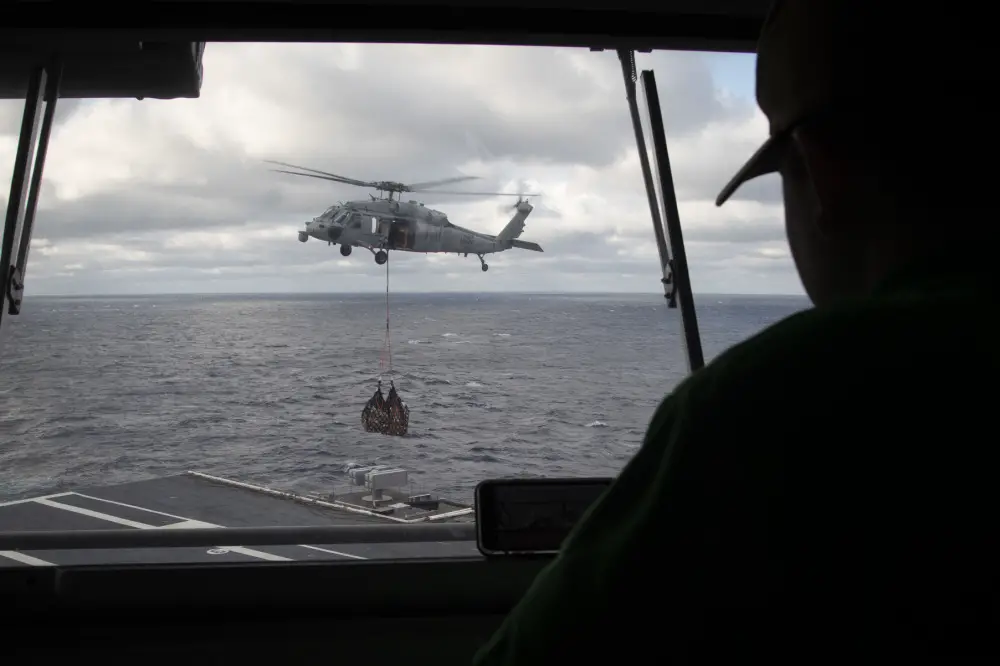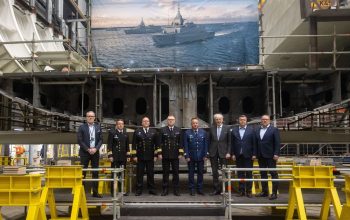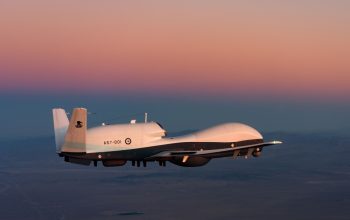After 14 days at sea conducting flight operations and multiple certifications, USS Gerald R. Ford (CVN 78) completed its first vertical replenishment (VERTREP) with MH-60S Sea Hawk helicopters, attached to the “Tridents” of Helicopter Sea Combat Squadron (HSC) 9 while alongside USNS Joshua Humphreys (T-AO-188) in the Atlantic Ocean, March 24.
Ford is executing an 18-month phase of operations known as Post-Delivery Test and Trials (PDT&T) to ensure her overall deployment reediness. Cmdr. Carl Koch, Ford’s supply officer, explained that by accomplishing this task, Ford is one step closer to being fully mission ready.
“Exercising and proving our ability to conduct simultaneous fueling and
replenishment-at-sea increases the ship’s flexibility to respond to mission requirements as it minimizes our required time alongside a supply ship,” said Koch.
Master Chief Logistics Specialist Sunshine Ridgeway, Ford’s S-6 division leading chief petty officer, shares a mutual feeling with Koch of the ship being independent at sea.
“By conducting these types of evolutions, we are able to keep the ship at sea for longer periods of time, which in turn allows us to maintain our focus on our current mission of qualifying pilots to support the fleet,” said Ridgeway.
Koch added, “We can extend our endurance for both air operations and sustaining the Sailors onboard to increase our time on station and minimize our time in port. By conducting simultaneous operations, we can be available for other missions in a shorter amount of time.”

Logistics Specialist 2nd Class Katie Ruff, from Easton, Maryland, assigned to Ford’s supply department, has arguably one of the most dangerous jobs during the VERTREP which involves placing the cargo pennant pole underneath the helicopter.
“We have to use this hook so that the helicopter can return material and equipment that we are sending back to the supply ship,” said Ruff. “I was very impressed with the dexterity and ingenuity of the entire flight deck team involved with the VERTREP.”
There are many Sailors that work throughout the evolution and Ridgeway explained how all the food and dried goods gets to its final storage space until needed for use. “We brought on the pallets of fresh fruits and vegetables, dried goods and frozen food stores during the VERTREP,” said Ridgeway. “Our team moves all the pallets from the flight deck to the aircraft elevators where it is moved to the hangar bay. Once inside the hangar bay, the pallets are dispersed to various elevators that move all the stores and supplies to the storage areas below decks.”
Ford completed the VERTREP of 77 pallets of food and other dried goods in just over four and a half hours.
Koch explained that this type of evolution takes effort from Sailors from multiple departments all working together and training each other to complete the task.
“Air and weapons departments provided us a tremendous amount of assistance in training our team, offering their experience and knowledge from past
VERTREPs on other platforms,” he said. “Our Supply VERTREP team has comparatively less experience in conducting VERTREPs. We continue to increase our proficiency to minimize our dependency on other departments — while we all work well together as a team, we want to get to a point where we can increase our self-reliance so our shipmates can focus on their areas of expertise.”
Gerald R. Ford is a first-in-class aircraft carrier and the first new aircraft carrier designed in more than 40 years. Ford is underway conducting carrier qualifications in the Atlantic Ocean.


























